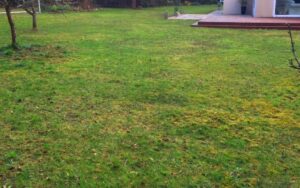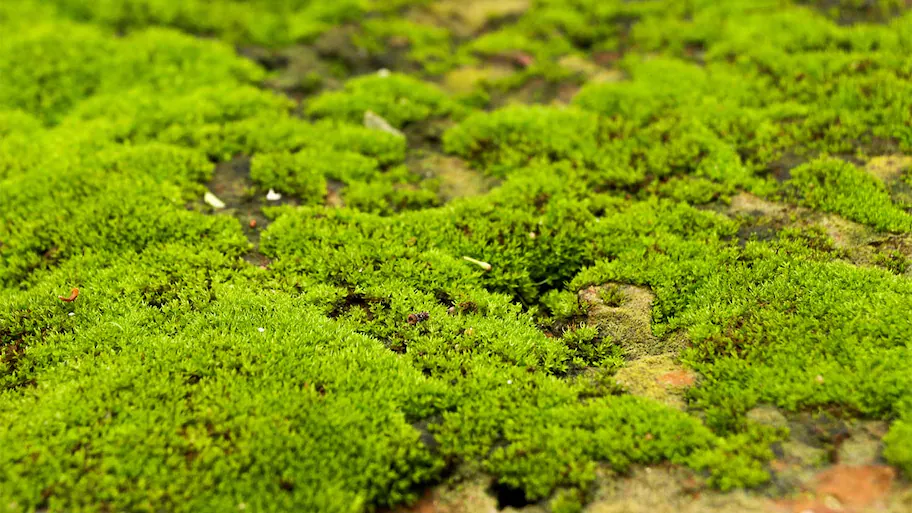Moss can be a persistent problem in lawns and gardens, particularly in areas with poor drainage, low light, and compacted soil. While moss itself is not harmful, it can indicate underlying issues with your soil or lawn care practices. Here are some effective strategies to help you avoid moss and maintain a healthy, vibrant landscape.
1. Improve Soil Drainage
Aerate Your Soil:
- Aeration helps alleviate soil compaction, allowing water, air, and nutrients to penetrate deeper into the soil. Use a lawn aerator to perforate the soil with small holes.
Top Dressing:
- Apply a thin layer of compost or sand over your lawn to improve soil structure and drainage. This helps create a less hospitable environment for moss.
Correct Drainage Issues:
- Ensure that your lawn has proper grading to direct water away from low spots. Installing French drains or swales can help manage excess water.
2. Increase Sunlight Exposure
Prune Overhanging Trees and Shrubs:
- Trim back branches that cast excessive shade on your lawn. Increasing sunlight exposure helps dry out the soil and reduces the conditions moss prefers.
Selective Tree Removal:
- If necessary, consider removing trees that cast significant shade over large areas of your lawn. This can improve overall lawn health and reduce moss growth.
3. Maintain Healthy Soil pH
Test Your Soil:
- Use a soil pH testing kit to determine the acidity of your soil. Moss thrives in acidic conditions, typically with a pH below 6.0.
Lime Application:
- If your soil is too acidic, apply lime to raise the pH level. Follow the recommendations based on your soil test results to avoid over-liming.
4. Improve Lawn Care Practices
Proper Mowing:
- Mow your lawn regularly at the recommended height for your grass type. Avoid cutting the grass too short, as this can stress the lawn and encourage moss growth.
Fertilize Appropriately:
- Apply a balanced fertilizer to provide essential nutrients to your lawn. Healthy, vigorous grass is better able to outcompete moss.
Water Correctly:
- Water your lawn deeply and infrequently rather than shallowly and frequently. This encourages deep root growth and helps prevent the damp conditions moss prefers.
5. Reduce Soil Compaction
Avoid Heavy Traffic:
- Minimize foot traffic and heavy equipment use on your lawn, especially when the soil is wet. Compacted soil creates an ideal environment for moss.
Regular Aeration:
- Aerate your lawn annually to keep the soil loose and improve drainage. This is particularly important for high-traffic areas.
6. Apply Moss Control Products
Moss Killers:
- Use moss control products that contain iron sulfate or ferrous ammonium sulfate. These products can effectively kill moss without harming your lawn. Follow the manufacturer’s instructions for application.]

Organic Alternatives:
- Consider using organic moss control methods, such as applying a mixture of water and dish soap. Spray the mixture on mossy areas to kill the moss. Be sure to test a small area first to ensure it does not harm your grass.
7. Reseed Bare Areas
Overseeding:
- After addressing the conditions that favor moss growth, overseed your lawn to fill in bare spots. This helps establish a thick, healthy turf that is more resistant to moss invasion.
Select the Right Grass Seed:
- Choose a grass variety that is well-suited to your climate, soil type, and light conditions. This ensures better growth and reduces the likelihood of moss returning.
8. Maintain Consistent Lawn Care
Regular Maintenance:
- Keep up with regular lawn maintenance, including mowing, watering, fertilizing, and aeration. Consistent care helps maintain a healthy lawn that is less susceptible to moss.
Monitor and Adjust:
- Continuously monitor your lawn for signs of moss and make adjustments to your care routine as needed. Early intervention can prevent small moss patches from spreading.
Conclusion
Preventing moss in your lawn and garden involves creating an environment that favors healthy grass growth over moss. By improving soil drainage, increasing sunlight exposure, maintaining the proper soil pH, and following good lawn care practices, you can significantly reduce the likelihood of moss problems. For professional lawn care services and expert advice, contact Green Pulse Landscaping. Let us help you achieve a lush, moss-free lawn!
Contact us today for a free estimate at
(857) 504-5117 or email us at
contact@greenpulselandscaping.com to schedule a consultation and learn how we can help you achieve a lush, green lawn.
Click to Call Us!


